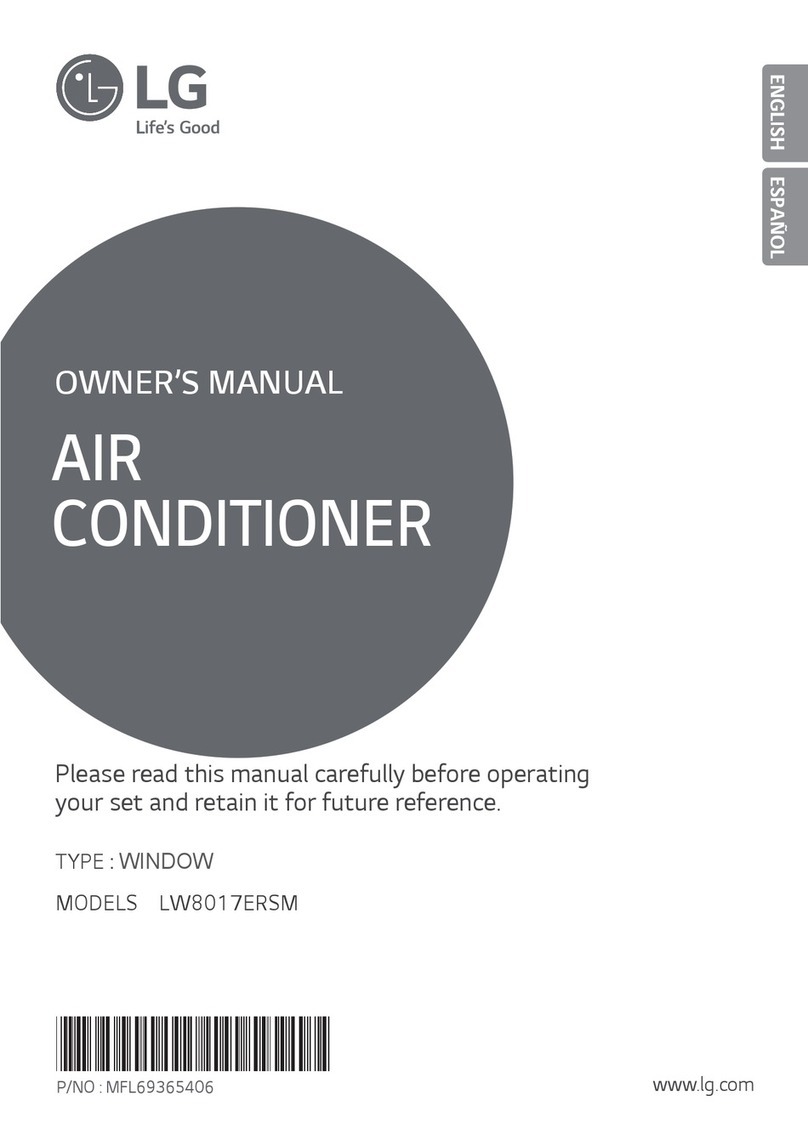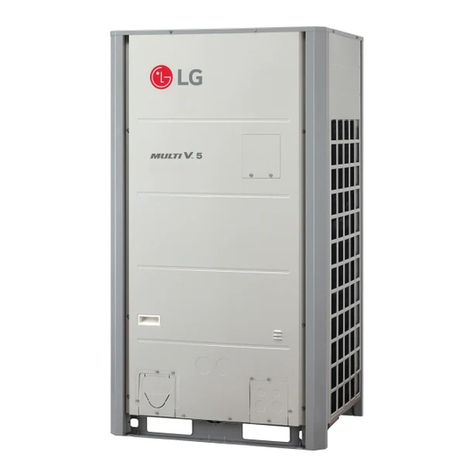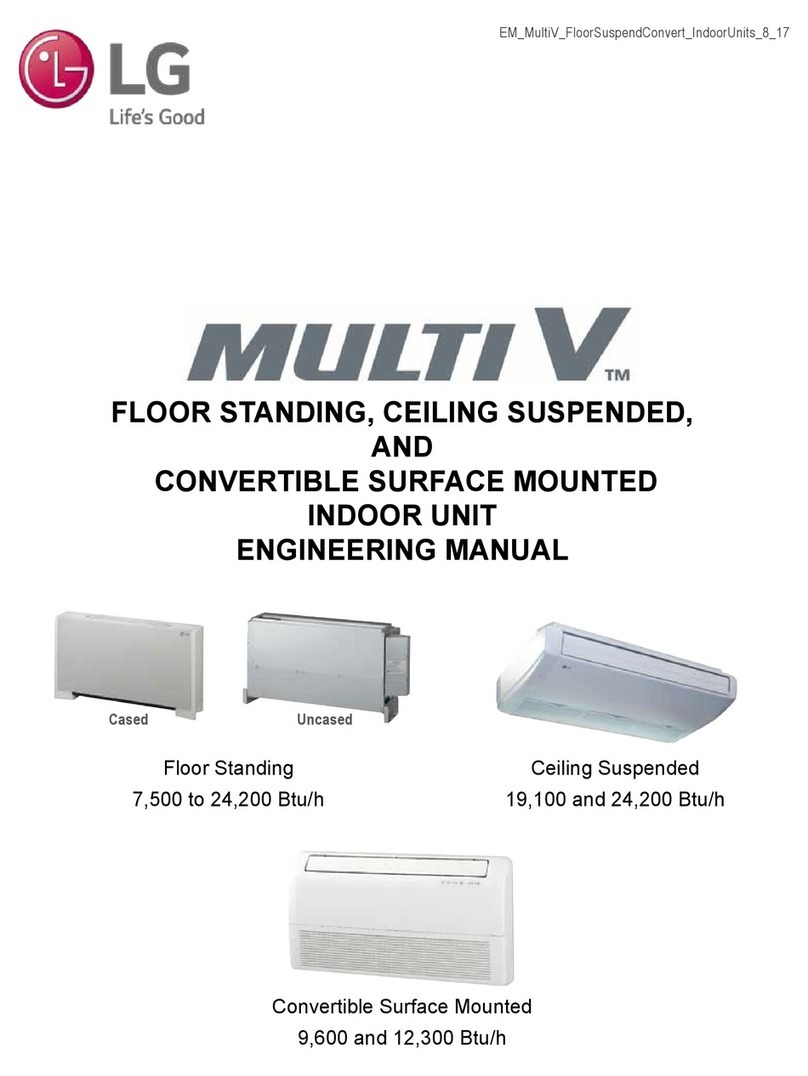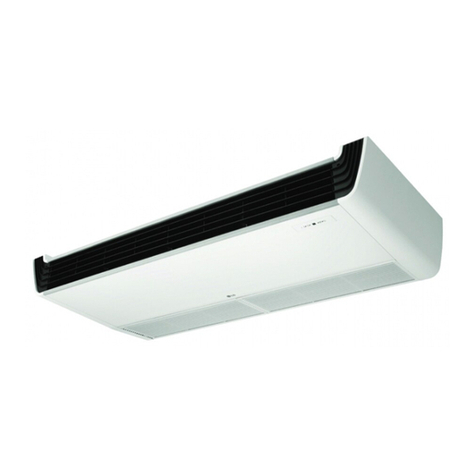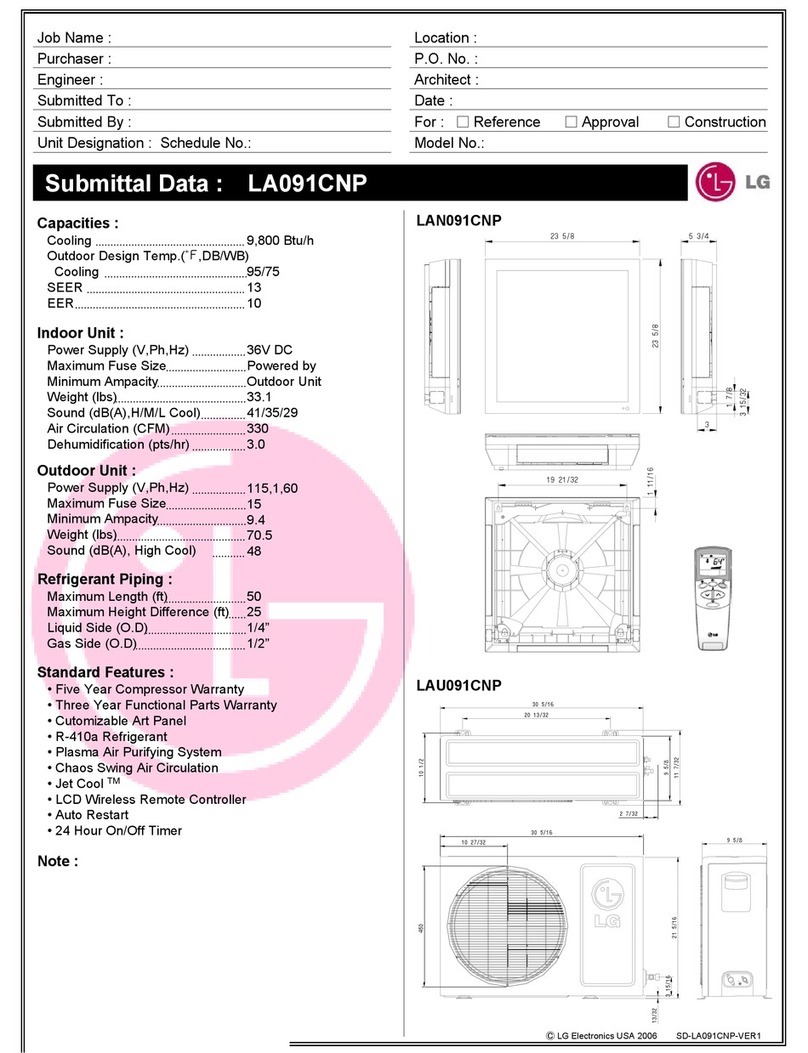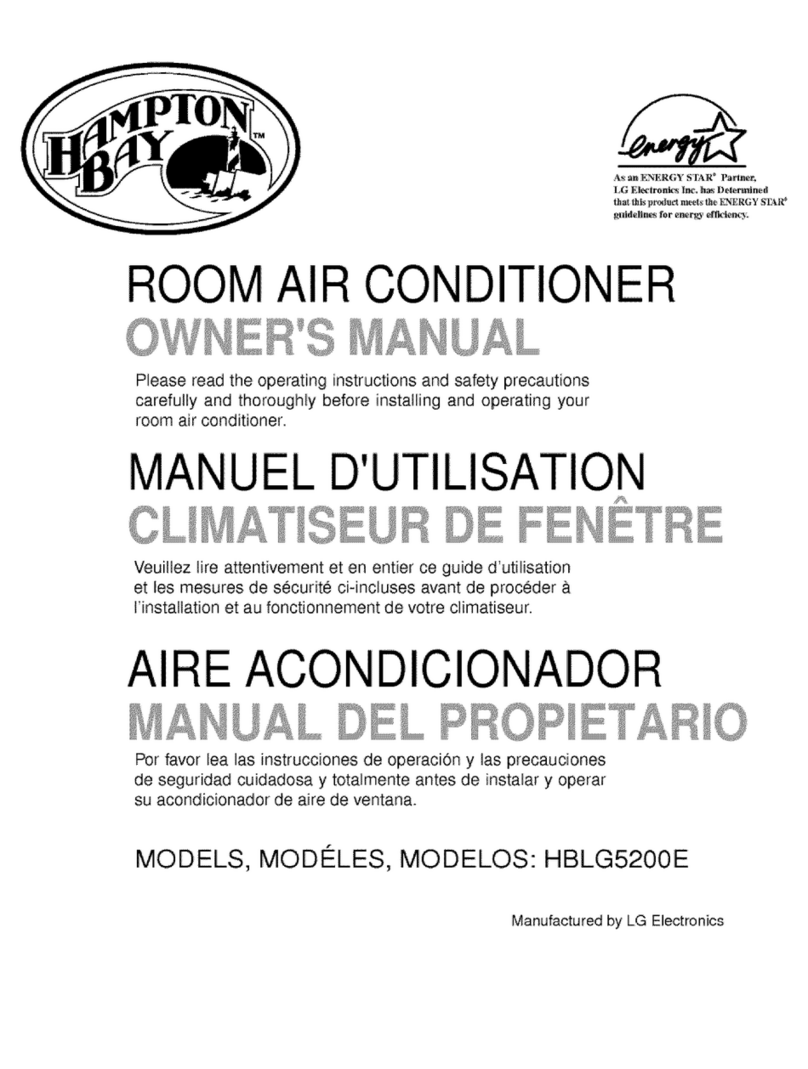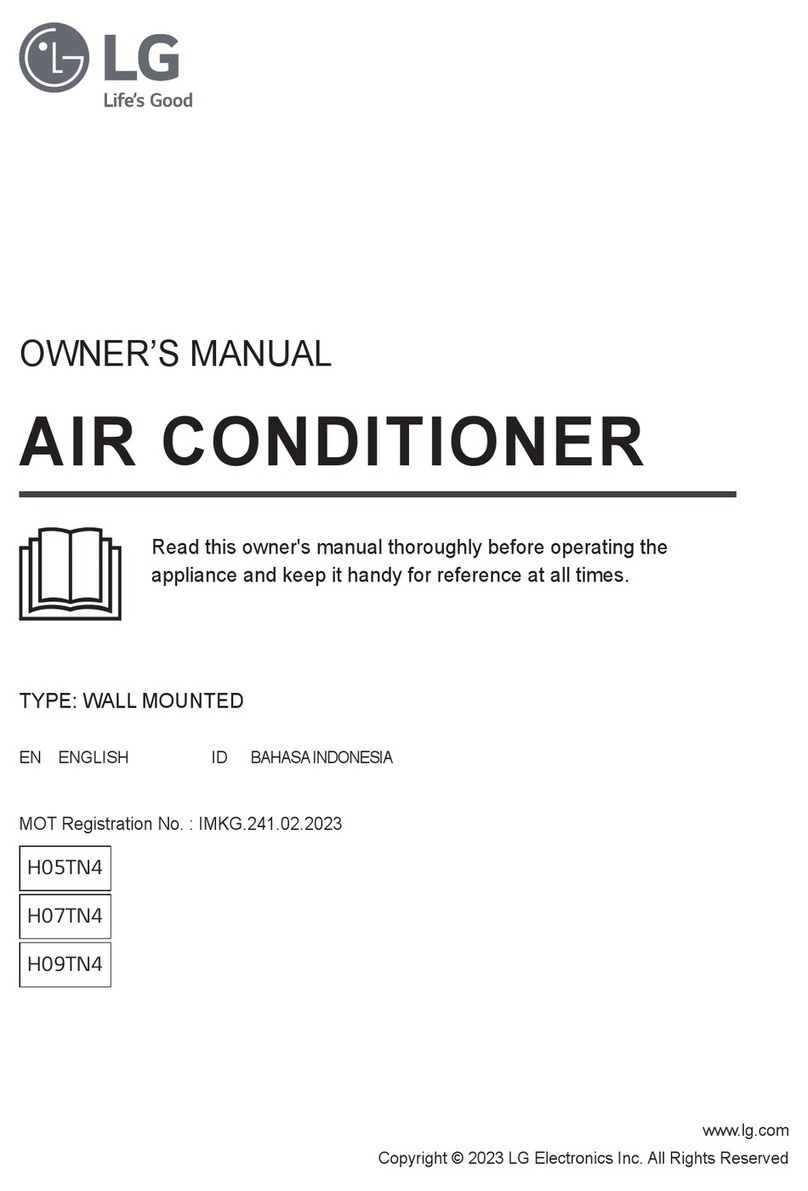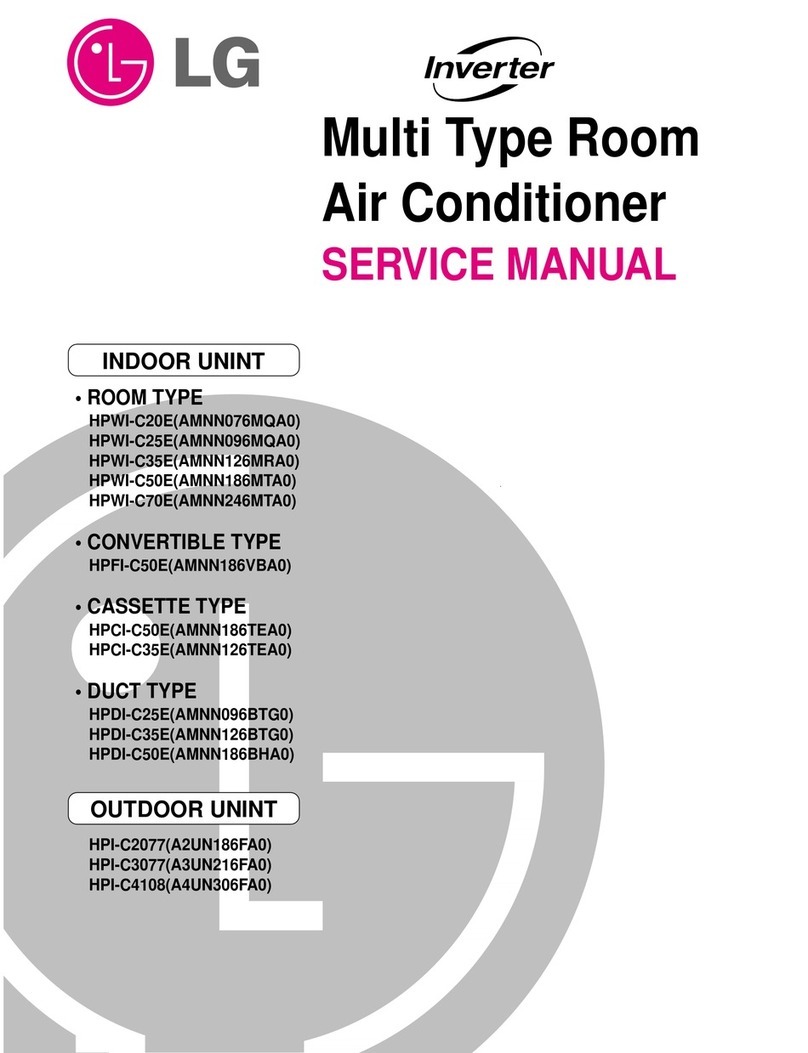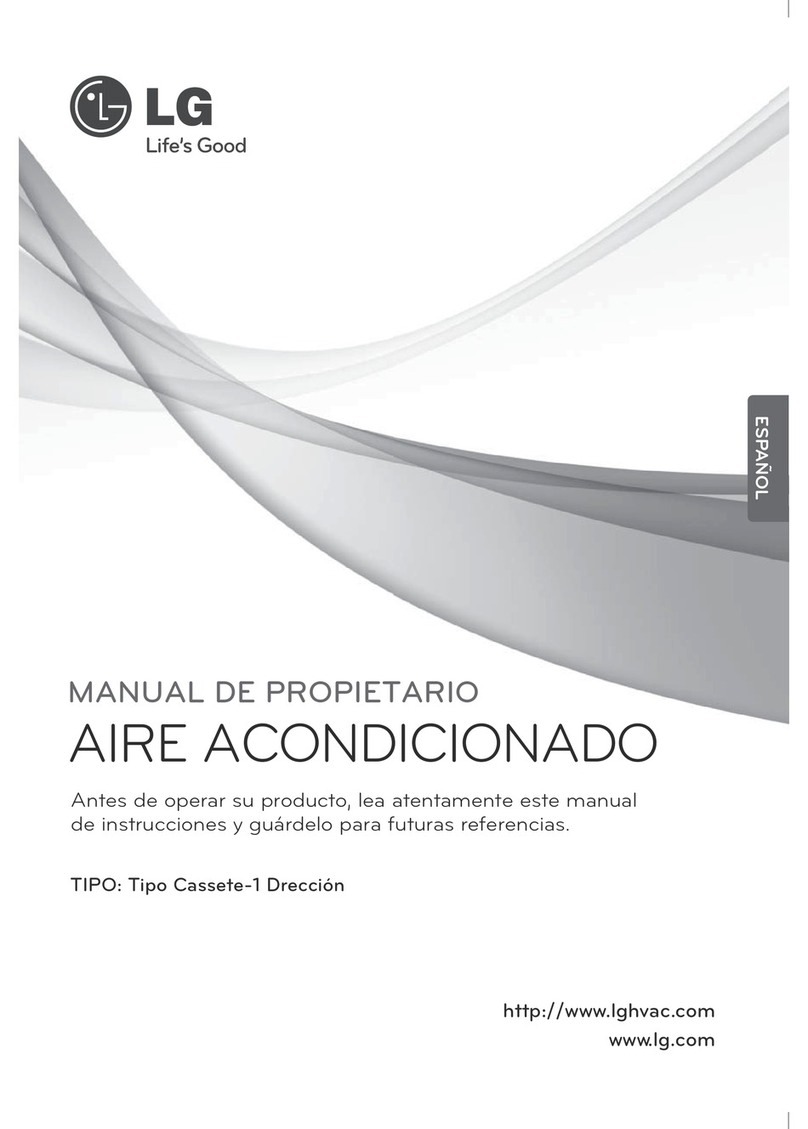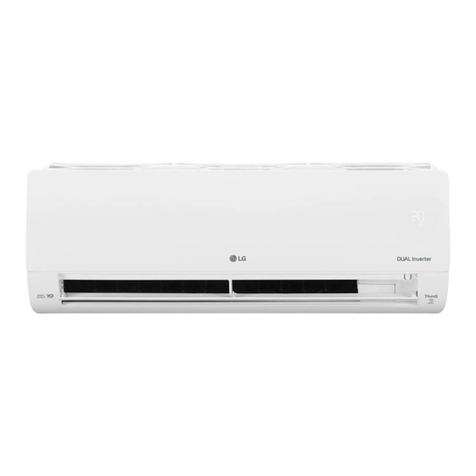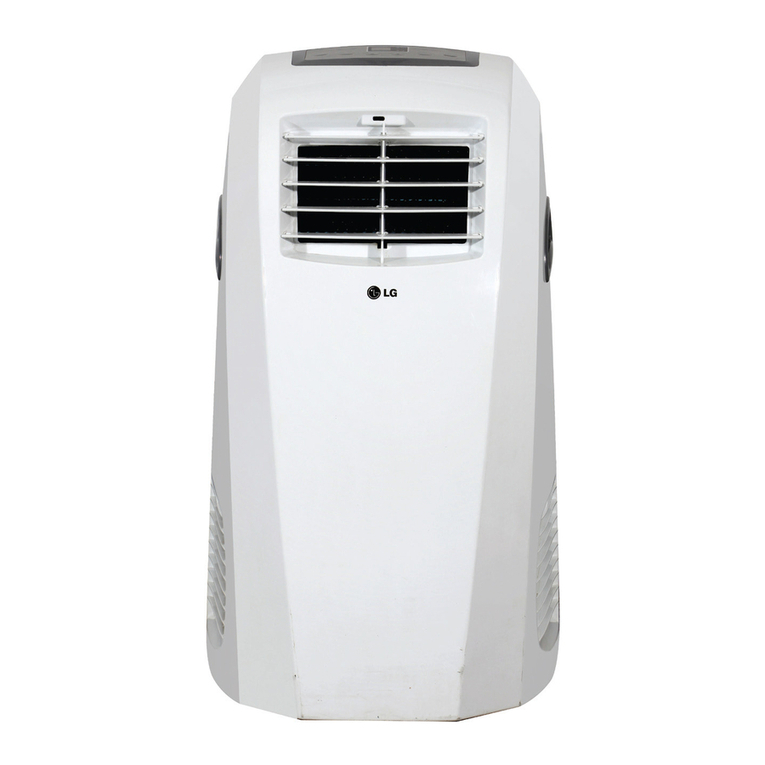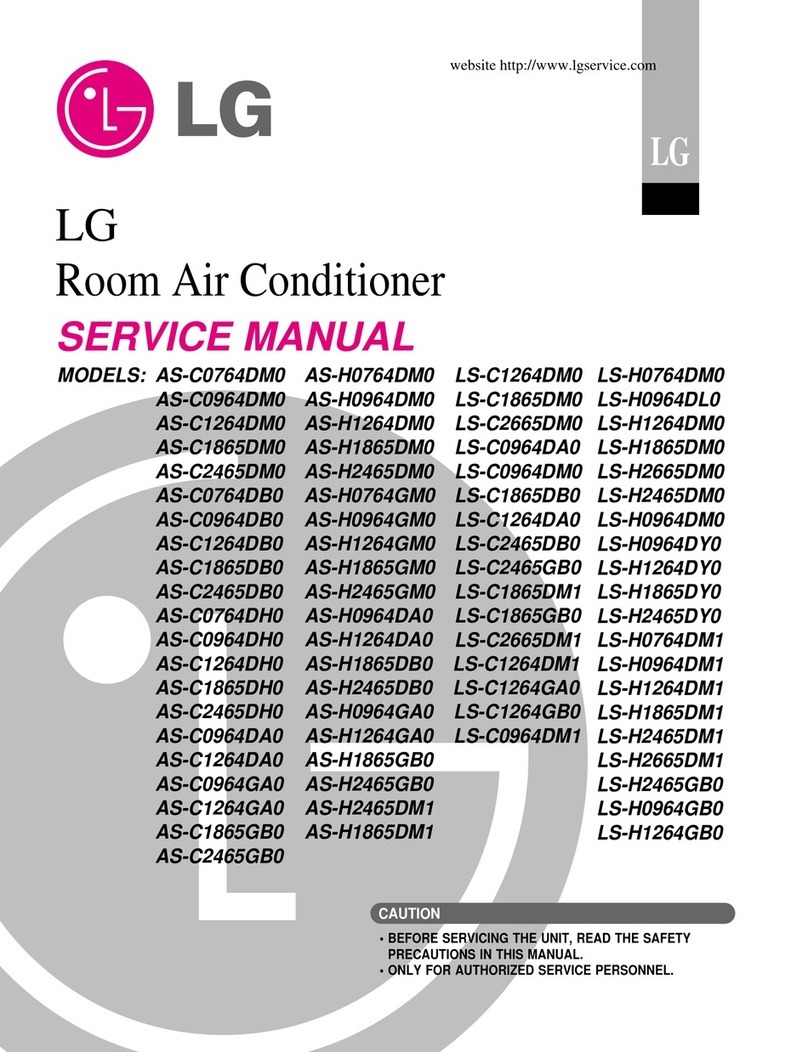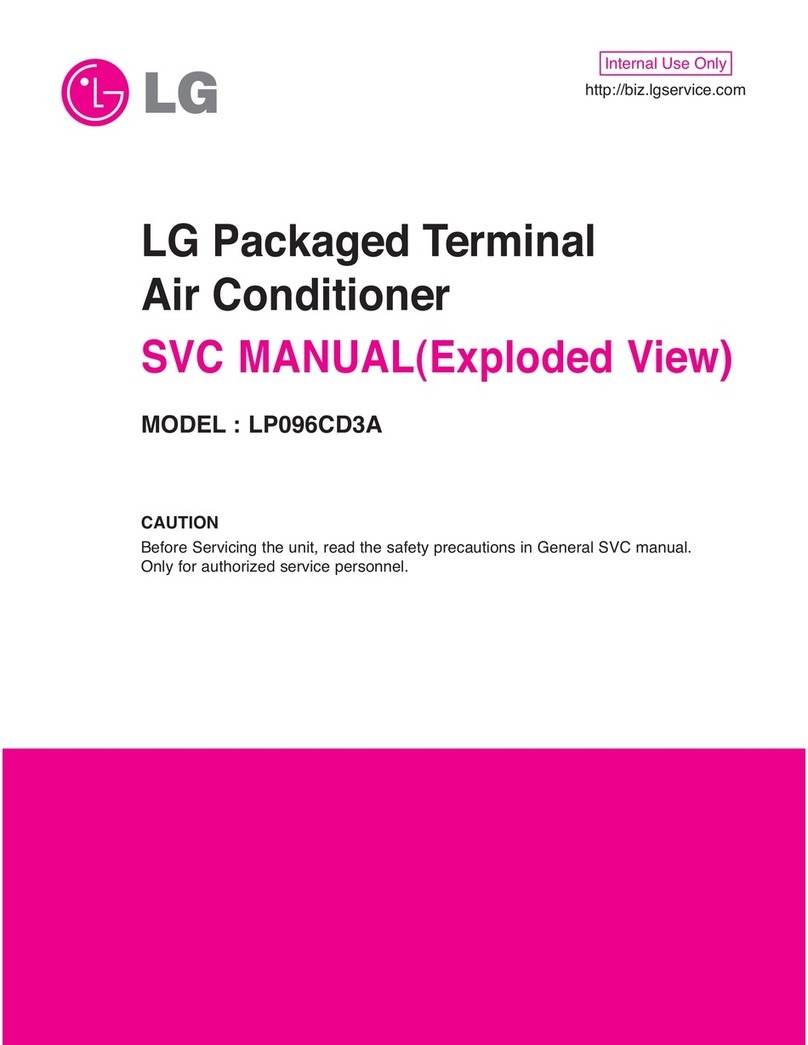4Air-to-Water Heat Pump
Safety Precautions
Safely dispose off the packing materials. Like
screws, nails, batteries, broken things etc after
installation or service and then tear away and
throw away the plastic packaging bags.
• Children may play with them and cause
injury.
Make sure to check that the power
device is not dirty, loose or broken and
then turn on the power.
• Dirty, loose or broken power device can
cause electric shock or fire.
In unit the step-up capacitor supplies
high voltage electricity to the electrical
components. Be sure to discharge the
capacitor completely before conducting
the repair work.
• An charged capacitor can cause electrical
shock.
Do not open the front cover or grille of the
product during operation. (Do not touch the
electrostatic filter, if the unit is so equipped.)
• There is risk of physical injury, electric shock,
or product failure.
If strange sounds, smell or smoke comes
from product, immediately turn the breaker
off or disconnect the power supply cable.
• There is risk of electric shock or fire.
Ventilate the product room from time to
time when operating it together with a
stove, or heating element etc.
• Oxygen deficiency can occur and hence
harm your health.
Turn the main power off when cleaning
or repairing the product.
• There is risk of electric shock.
Take care to ensure that nobody espe-
cially kids could step on or fall onto the
unit.
• This could result in personal injury and prod-
uct damage.
Take care to ensure that power cable
could not be pulled out or damaged dur-
ing operation.
• Almost the antifreeze is a toxic product.
Do not touch any electric part with wet
hands. you should be cut power before
touching electric part.
• There is risk of electric shock or fire.
Do not touch refrigerant pipe and water
pipe or any internal parts while the unit
is operating or immediately after opera-
tion.
• There is risk of burns or frostbite, personal
injury.
If you touch the pipe or internal parts,
you should be wear protection or wait
time to return to normal temperature.
• Otherwise , it may cause burns or frostbite,
personal injury.
Do not touch leaked refrigerant directly.
• There is risk of frostbite.
Make sure to install mixing valve (field
supply). The mixing valve is setting the
water temperature. The hot water temper-
ature maximum values shall be selected
according to the applicable legislation.
Do not heated to a temperature of
more than provided by the product.
• Otherwise, it may cause fire or dam-
age of product.
When installing the unit, use the installa-
tion kit provided with the product.
• Otherwise the unit may fall and cause severe
injury.
Be sure to use only those parts which
are listed in the service parts list. Never
attempt to modify the equipment.
•
The use of inappropriate parts can cause an elec-
trical shock, excessive heat generation or fire.
Do not use the product in a tightly
closed space for a long time. Perform
ventilation regularly.
• Oxygen deficiency could occur and hence
harm your health.
Do not allow water to run into electric
parts. Install the unit away from water
sources.
• There is risk of fire, failure of the product, or
electric shock.
Do not store or use or even allow flam-
mable gas or combustibles near the
product.
• There is risk of fire.
Wiring connections must be secured
tightly and the cable should be routed
properly so that there is no force pulling
the cable from the connection terminals.
• Improper or loose connections can cause
heat generation or fire.
